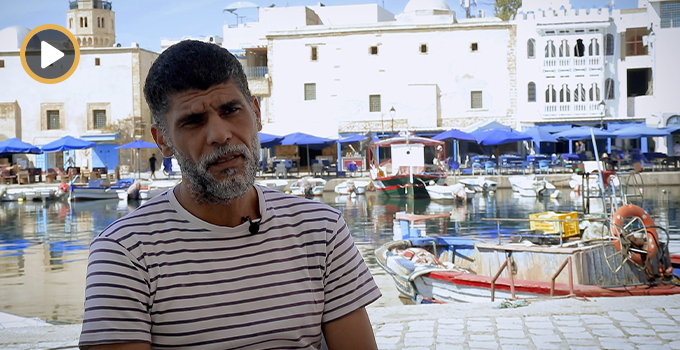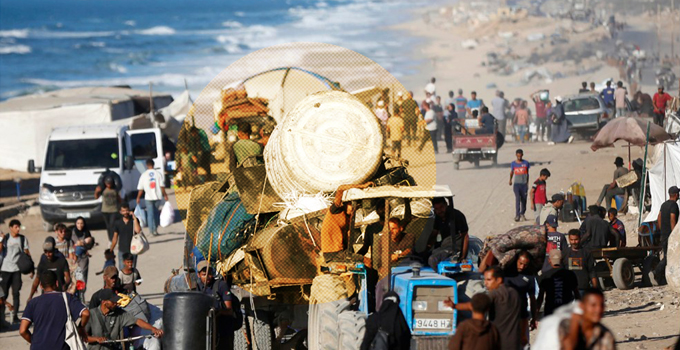
Nawaat: There has been a great deal of excitement over the past month for the PSP team. Can you tell us about this mission and some of the milestones it is reaching?
Nour Raouafi: Since the advent of the space age almost fifty years ago, NASA has sent missions to explore all corners of the solar system. That includes all the planets, moons, comets, asteroids and even the edge of the solar system; we even have two spacecrafts that are now out of the solar system completely. But there is one place we have not visited yet, and that is the atmosphere of star. This mission, sending a probe to the solar atmosphere, has been around for almost sixty years, yet we hadn’t been able to accomplish it because of technological limitations. Flying into the outer part of the Sun’s atmosphere, what we call the corona, is extremely hard because the probe we send in has to withstand extreme conditions in terms of temperature and radiation. In order for the mission to be successful we have to protect it at all times, and this has not been possible because we hadn’t come up with a material that can dissipate all that heat.
About fifteen years back we found the solution: the Thermal Protection System (TPS) which enabled us to build this spacecraft. This structure has to be facing the Sun at all times to keep the instruments behind it in the shade. Now, we have 24 orbits to get closer and closer to the Sun. When we get very close, about 10 solar radii within a few years from now, the side of TPS facing the Sun will be 1,400˚C. The other side of the craft, which is just 11.5cm thick, will be only 300˚C. One meter behind that, the temperature will be 29˚C. At a certain point, PSP will be flying through structures we see during a total solar eclipse, what we call streamers, in the corona. That’s a testimony to how close it is to the Sun. On November 6, it was flying at 95km/second. When we get closest to the Sun six years from now, the spacecraft will be flying at 200km/second. This means the spacecraft would cross Tunisia from north to south in almost two seconds. That is simply amazing.
So this spacecraft is breaking all types of barriers for us, breaking records in terms of distance to a star, in terms of speed, but also breaking a long-standing tradition of observing a star from far away. Now we are going to visit a star, the ultimate objective in a universe—there is nothing beyond that. We are stepping into a medium we have never visited before, and we certainly will make big discoveries there. And this is the big question that keeps me so excited: what new phenomenon are we going to discover?

What are the objectives of this mission? What information are you looking for in the corona?
Let me start by saying that PSP is one of the most exciting missions in the advent of the space age. It will revolutionize our understanding of our star, the Sun, not only making history by answering questions that have puzzled scientists for decades, but most likely deciding the direction of future solar research. Flying in the outer part of the Sun’s atmosphere for the first time, PSP will tell us why the solar corona is so much hotter than the solar surface. Almost 80 years back, we discovered that the solar corona is much hotter than the solar surface. The surface is at 6,000˚C, and when you go a short distance above that, the temperature will spike to more than a million degrees. But until now, we don’t have a complete understanding of what is happening there to cause the temperature to rise so much.
Another phenomenon discovered six decades ago is the solar wind, which is the flow of particles escaping the sun at all times and accelerated over distances to hundreds of kilometers per second. We still don’t understand what causes that acceleration. A third big phenomenon in the solar corona is called magnetic activity, which manifests in the form of flares and coronal mass ejections (CMEs). We know that whenever a big event like a flare takes place, it accelerates particles to almost the speed of light, causing what we call shock waves. But we don’t understand the precise physical process that leads to these high energies. When PSP flies into the solar corona, it will make the measurements that will tell us what is happening there, what causes heating, what causes acceleration, what energizes these particles that are flying almost speed of light.

More generally, what is the interest of this mission for us here on earth? Do we need to further explore the atmosphere of Sun?
Many people argue that « we’re protected by the magnetic field of earth, so we’re in good shape. Why should we care about what is happening 150 million km away on the Sun? » If I rephrase this question—can we live comfortably without understanding what is happening in our solar corona in particular?—the answer is no. And the reason is that we are living in the extended atmosphere of the Sun, we are dependent on what is happening there. Everything that takes place on the Sun will affect us in one way or another.
Here’s an example: imagine that one of these big events, CME, erupts from the Sun and is hurdling towards us here on earth. In the best case scenario, it will cause damage to space equipment like GPS and communication satellites. In the worst case scenario, if this event is big enough it can lead to the shutdown of the power grid. So if we really want to enjoy the technological advancements we have achieved so far, we have to understand the corona. The Sun alone weighs more than 99.98% of the total mass of the solar system, so basically the Sun by itself is the whole solar system, and will do what it wants to do. What we can do if we understand what is happening there is make forecasts and prevent damage.
Another thing that many people have asked me is why we need to send a probe to the solar atmosphere when we’ve been observing the Sun for decades from space. In other words, why can’t we understand these phenomena from all the data collected since the 70s and even 60s? It’s extremely hard to understand solar wind acceleration and these solar energetic particles when we are observing very far away. Once the solar wind starts moving away from the Sun, it gets affected by many other phenomena and processes throughout its journey. We believe that these physical processes occur on very small scales both in time and space and we can never access these scales when we are observing from far off. The only way to understand is to send the probe there, to make measurements locally and send the data back to earth.

You are working on a project that began sixty years ago, on a mission that extends beyond planet earth and into the solar system. What does it feel like to be working on something of this magnitude, both in terms of history and space?
Well…it’s very touching. You know I was born in Tunisia, in the governorate of Kasserine. I started my studies in a very modest school and I had dreams like this, but they were nowhere near what I’m doing now. As I grew up, my dreams grew bigger and bigger. Until about 10 years ago, I had hoped to work on a big project like Parker Solar Probe, which is arguably the most exciting and most challenging mission that NASA ever did. Now that I’m working on it, to be on board with a mission like this and in a position like the one I am in, it’s just an honor.
We recently spoke with graduated science majors who expressed feeling limited in their capacity to grow as scientists owing to a lack of government support, structures and financial resources for scientific research in Tunisia. What in your experience has enabled you to pursue what you had dreamed of doing?
I think it all starts with passion and curiosity. I was always interested in things I didn’t know and didn’t understand, I always looked for challenges and never settled for easy things. I wanted to do what I had no idea how to do. I think that’s how anybody can start. This doesn’t mean the road is easy, and one has to brace himself for all the challenges he might face in this journey. But in the end it has been very rewarding, I’m doing what I really like, I wake up every morning not knowing what I’ll be doing, what I might discover. It’s probably the best job one could ever dream of.
Now, going back to Tunisia. I try to reach out to people, to my university, Faculté des sciences de Tunis, every time I go back. This science is so demanding financially and in terms of structure and all that, but we can actually do the science without building a spacecraft like PSP which is so expensive (by the way, the cost of this mission is about 1.5 billion dollars). We can do the science without paying that much money. NASA has a policy that all data are public. Anybody in the world can access data from any mission and do science with it. That’s an opening for all of us back home in Tunisia and different places in the world. So being in Tunisia is not really a limitation at all, we can work on PSP, we can work on New Horizons or other missions. You can choose what you do, the data is out there and if you don’t know how to access it, you can reach to us.



iThere are no comments
Add yours